World Radio Day 2020: Radio – resilient technology for disasters
- 12/02/2020


By: Johnny Fisher, First Response Radio
Around the world, people seek the most advanced media they can find that is affordable, available and offers desirable content that is relevant to the context of the audience. The technological landscape of a community is often dramatically altered by disasters: what is available, affordable and desirable after a disaster can be radically different from that before it.
Radio is not a new technology. But it is eminently affordable, can be made rapidly available, and has content that can easily be localised to meet the needs of affected communities. To celebrate World Radio Day 2020, we teamed up with CDAC member and disaster radio enthusiasts and experts at First Response Radio (FRR) to look back at the critical role of radio in some of the recent humanitarian disasters.
Disaster radio for a TV audience – Bihar, India 2017
In 2017, First Response Radio (FRR) commissioned network partner Health Communication Resources (HCR) to carry out a post-disaster evaluation of the response to the Bihar floods in 2017. We learned from disaster responders working in government agencies and NGOs that, in a context which normally prefers TV, radio had become the most effective communications tool after the floods. Several stations broadcast disaster recovery content and, where people had radio sets, two-way community engagement was made possible.
Rural populations in Bihar have relatively low literacy levels, so internet use is low. Disaster responders said it would be easier to supply radios to displaced community members than television sets and, in any case, TV content related to the disaster was aimed at informing people outside the affected area rather than engaging with local communities. However, they also said that many community members did not have radio sets. They did not use them in ‘peace time’ or they had lost them in the flood. The disaster responders told us they would love to see radios included as standard in disaster recovery kits for affected people.
HCR’s evaluators interviewed community members using a standardised health questionnaire alongside a media questionnaire. They found that people who said they had no radio set after the flood also reported significantly poorer health scores. The correlation is statistically significant regardless of whether respondents had a high or low income.
Disaster radio for displaced people – Cyclone Idai, Mozambique 2019
After Cyclone Idai hit Mozambique in March 2019, most radio stations in the affected area were off-air. The International Organization for Migration (IOM) found that most community engagement in the resettlement sites happened via face-to-face communication from community mobilisers and community leaders. However, this was not true for all camps. In one site near Guara Guara, radio was the preferred means of two-way community engagement for five of the six months reported. What made this camp different? A community-centred radio service was broadcasting nearby AND there were radio sets in the hands of community members. The camp managers had set up radio listener groups using wind-up radios given by a First Response Radio team. FRR had also equipped and trained volunteers in the nearby town of Buzi to set up a temporary FM station using a studio suitcase.
CDAC’s Communication, Community Engagement and Accountability Coordinator and a Community Engagement Working Group (CEWG) made sure that the station received vital aid and health messages in local languages from the humanitarian hub in Beira. Voices from across the local communities – leaders, teachers, young people - also came on air to send messages of encouragement and make community announcements.
Leveraging the potential of radio
In high radio use areas and in places where TV is traditionally more popular, time and again we find that radio, both because of its capability and cost effectiveness, is the most affordable, available and relevant communications technology for affected populations. The humanitarian community is already working hard to ensure that disaster messaging is fit for purpose. But to maximise the effectiveness of our communication and engagement with communities, we must ensure that the messaging and feedback is accessible to such communities.
FRR, working with other CDAC members, has drafted a strategy for making radio distribution a simplified, standard practice in disaster preparedness and response. We would love to hear how your organisation could contribute, particularly through offering stockpiling space, logistical assistance or distribution expertise. Please contact Mike Adams at FRR for more information.
Image top: Buzi volunteers broadcasting disaster response content. Sofala, Mozambique. (J Fisher, HCR 2019); Image below: Young people from Buzi create community focussed radio programmes. (J Fisher, HCR, 2019)




















